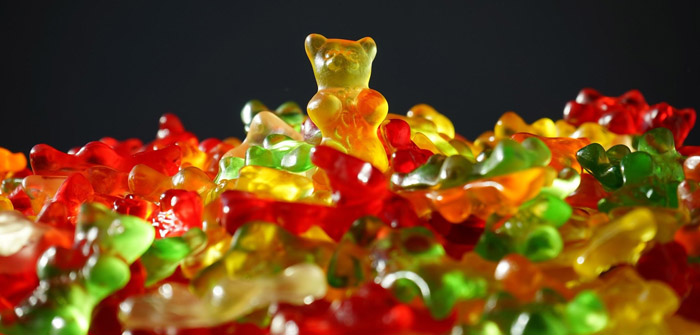With everyone taking CBD gummies for pain, anxiety, inflammation, general wellness, and a host of other things, it seems silly that advertising CBD is so restricted. Brands are finding ways around these barriers, though, and reaching more and more new customers who seek the powerful benefits CBD gummies have to offer.
The Rules for Paid Ads
Censorship of CBD brands on social media seems to mostly be for paid ads, and attempting to run a paid ad that violates policies can get your account permanently banned. Not making things any easier, is the fact that most of these advertising policies are completely internal and impossible to know up front.
Here is the information currently circulating the internet, though none of these statements reflect anything found on any of the official platform sites:
- Facebook – Facebook does allow paid advertising for topical CBD products as long as they do not mention therapeutic effects. You can include a link that redirects to your blog where users can learn about CBD gummies and other products as well.
- Twitter – For Twitter, there is a complete ban on all things herbal, medicinal, or supplemental.
- Instagram – Instagram’s policy is in line with Twitter, but enforcement is inconsistent.
- TikTok – TikTok has a strict anti-drug policy and they are pretty consistent about enforcing it.
Calculated Risk
Social media and Google bans on paid advertising only means that CBD brands have to get creative with their accounts, finding ways to boost visibility without paid ads. If you are extra bold, you could try to run paid ads that push the envelope but do not outright break the rules.
Here is an example of a recent Facebook ad that takes advantage of the platform’s recent concession to allow ads for CBD topicals:
- The photo in a CBD lotion ad was a layout, with the bottle labeled as “CBD lotion” front and center. Behind the CBD lotion were other packages, labeled “gummies,” “cookies,” and “oil.” These were obvious allusions to the fact that the advertised company also carries products other than topicals. The link included took you to the company’s website.
Social media platforms are likely just covering themselves legally. Once actual federal laws are clearer, they will be able to publish sharper guidelines about CBD-related paid advertising—this, however, may be several years away. In the meantime, it is a good idea to keep in mind that Facebook, Twitter, Instagram, and TikTok are not out to get you.
Running paid ads on any of these platforms requires creativity. Is it valuable to drive people to your site without ever mentioning CBD? Try putting together ads that clarify which products you offer, while avoiding mentioning CBD or showing the plants.
Spread the Free Love
Your marketing strategy absolutely must include social media, and you need to spread out your efforts so that getting shut down on one platform does not mean the end of your business. When you manage to boost your following everywhere, losing one account is not quite as terrible as it is for businesses completely depending on a single platform.
You may even be able to get the bulk of your followers and page visitors to come to your page organically, with some time and effort put toward creating regular posts that get people talking. There may be restrictions on paid advertising, but user accounts and business pages are typically more relaxed.
You do not need to directly advertise your products to increase brand awareness, and the beauty of the current CBD market is that people are out looking for CBD. Once consumers recognize and trust your brand, they will come to you. The important thing to focus on, is getting your name on people’s minds.
Facebook, Instagram, and Twitter may let you get away with featuring products on your page the same as any other brand using social media to peddle their ware (though shoppable posts are out of the question). TikTok’s policies are unclear, but they seem to be quite fond of censorship.
Ideas to Drive Organic Traffic and Engagement
Use stories, videos, regular posts, geotags, tags, hashtags, and branded hashtags, to get people talking about your product. Your objective on social media is to build community around your CBD gummies brand. Keep in mind that you need to post at least daily and interact with other users regularly, in order to optimize the way your products are pushed out in front of people who may be interested.
Here is a suggested schedule for the two most popular platforms on the internet, Facebook and Instagram:
- Monday: Start the week off with a contest ending on Friday.
- Tuesday: Feature a product or post a video.
- Wednesday: Post a link back to your well-written and informative blog post.
- Thursday: Post a survey or open-ended question.
- Friday: Use video content to announce a winner.
- Saturday: Feature a product.
- Sunday: Share user-generated content.
Twitter and TikTok’s singular medium makes organic promotion more of a challenge, especially since they ban and censor more content. If, however, you can master either of these platforms, you are well on your way to building a loyal following that will serve your brand well.
Final Thoughts
CBD has only become legal in the past couple of years, and though navigating the marketing waters has been a challenge, we have already come a long way. With more and more people taking products like CBD gummies for pain, social media platforms will eventually open up and make it easier to use them as a way to boost your brand.
In the meantime, have fun with getting creative about your strategy, and know that customers are out there looking. You just need to make it easy for them to find you.





